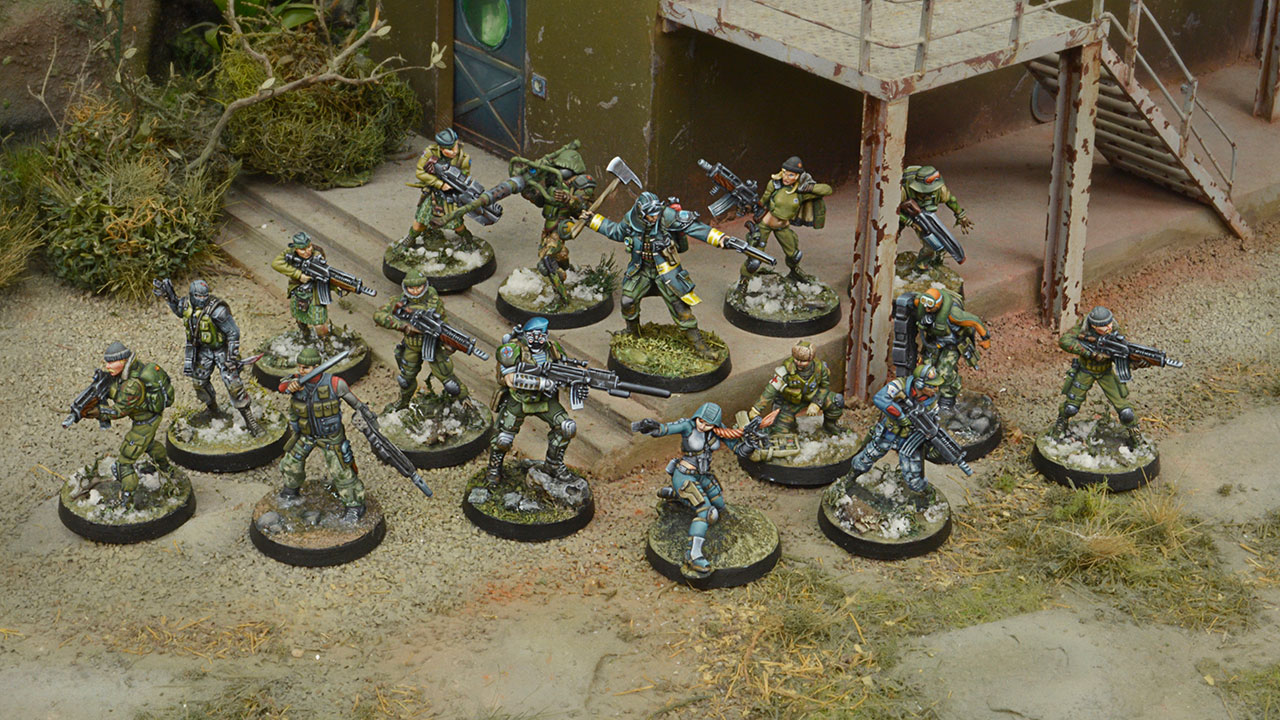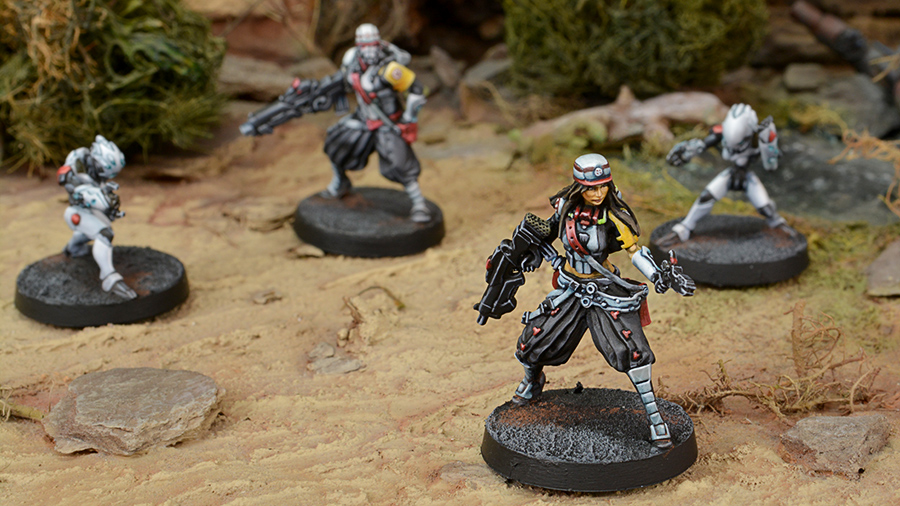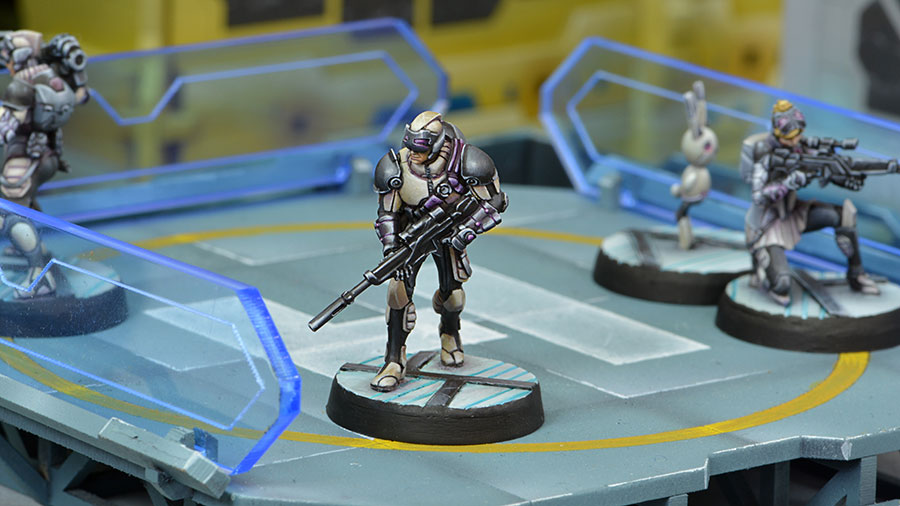5 List Building Tips For New Infinity Players
In Infinity, like pretty much any other war game, people have predetermined lists of units that they're bringing to battle to assert dominance. If you've spent much time on the forums for Infinity though, you'll notice a couple things about army lists: people don't really post many of them, and there is a mantra of, "it's not the list, it's you."
I've been working on a series of articles related to the second point, but really, why aren't people posting tons of army lists like you see in the forums for other games? Frankly, it's because outside of a few basics, it's far more about the scenario than the toys you bring to the board. While it's easy to be told again and again to try out different units and see what works best for you, when you're getting started, you may not even aware of any general best practices to get you going in the right direction. Those people are who this article is for.
1. Order Count
The first thing to be aware of is your order count. During the game, your main resource is your order pool, having enough orders to accomplish your goals is critical, so if you run an army with too few orders, you'll have a difficult time scoring objectives or even killing enemy models. A common rule of thumb is to have no less than regular 10 orders in a 300 point game, though following the most recent FAQ, I would step that up to 11, especially for armies like Aleph and Combined (who have those Netrods and Imetron to put in a pool alone). The reason for 11 is because you can spend an order from any combat group to activate a Coordinated Order, so that single model alone, which can easily just be an ARO piece, can help out your main group by providing the order needed for the Coordinated Order. Now, when I say a minimum of 11, I really do mean that's the minimum, personally, I prefer to be in the neighborhood of 12-14 with most armies (and more than that with Ariadna).
2. ITS Scenario Specialists
In nearly every ITS Scenario, you will need specialists to accomplish your mission objectives; you also need specialists to score the Classified Objective cards as well. Specialists include any model with one of these rules: Hacker, Doctor, Engineer, Paramedic, Forward Observer, Chain of Command, Specialist Troop (obviously). When I begin writing a list, I want to include at least one hacker, doctor, engineer, and forward observer, which will give me the requirements to handle pretty much any objective in the game. As I continue to write the list, if you're including any troops that have a specialist profile (such as a Grunt with Rifle), it's always worth considering upgrading them to be an extra specialist for only 1-2 points, in case another dies. The Scenario you're playing is also important. Typically a scenario will give an advantage to a specific type of specialist, so making sure you're bringing that one to the game is going to be important. In scenarios with many objectives, or where every specialist is key (like Beaconland), you'll probably want to build a list with 6+ specialists, while in others with fewer objectives (like Seize the Antenna) you can probably get away with only 3-4.
Note: While not a specialist, Baggage units are incredibly helpful in a diverse number of ways in ITS scenarios, don't overlook them!
3. Overlapping Range Bands
When you are new, it's incredibly easy to want to max out on the number of HMGs you can fit in a list and try to crush your opponent with overwhelming firepower, and if your opponent is new, it might even work. When you are playing against more experienced players though, they get good at exploiting your range bands to their favor. Looking at the graph above, you can see that the HMG has an impressive +3 range between 16" and 32", which can cover a good portion of the board, but terrain gets in the way and provides cover, so cunning opponents will find ways to close the gap and get within 16" or even 8" which will begin putting you at a penalty to hit. The Spitfire on the other hand has a very solid medium range gaining a +3 bonus between 8" and 24".
By diversifying your sources of firepower between weapons like Sniper Rifles and HMG's with mid-ranged weapons like Spitfires and even shorter ranged weapons like Combi Rifles, Submachine Guns and Boarding Shotguns, you can make sure that you have what it takes to handle opponents at any range on the board. Because most scenarios involve holding objectives outside your deployment zone, if you want to win the game, you'll have to be able to move up the board, making your long ranged weapons often less favorable than something more up close.
4. Multispectral Visor/Sensor
In my last article, I mentioned a little trick of using your own smoke grenades to provide cover for a model firing with Multispectral Visor Level 2. Well, now that you know it's a thing you can use to kill the enemy, you can probably expect people to do the same thing right back at you. The best way to counter this is with your own models with MSV2! Another thing I'm almost certain to have in any list is at least one model with a MSV2, specifically for dealing with enemy smoke throwers, but that's not all they're good for. Multispectral Visors give you a bonus when discovering, and shooting at, enemy camouflage units. Sensor bots also have an ability which will discover all enemy camouflage units within 8", making them incredibly powerful, though very short ranged. Having either or both of these in your army, and figuring out how to use them effectively, is going to make your life a lot easier.
5. Tricks
Who doesn't like a good trick up their sleeve? Camouflaged, Impersonator, and AD: Combat Drop units give you a bit of tactical flexibility that may be challenging for your opponent to deal with, and allow you to quickly adapt your combat plan during the coarse the game. When you deploy your army on the board and that's all there is to it, your opponent can freely visualize anything you can accomplish with those units, but if you deploy an army with 3-4 camo tokens on the board, they really need to be careful. Minelayers (and Ambush Camo) are especially fun as a single model gets to deploy with 2 camo tokens, allowing you to place a token in a risky, but anxiety inducing spot for your opponent (like covering an objective), and until revealed, your opponent will be left to wonder if it's a sniper, someone with a boarding shotgun, or a land mine!
Keep in mind when you're building an army, your opponent will only be aware of the units that are Public Information, and will have no idea what is lurking behind a camo token, in hidden deployment, or parachuting onto the board. Be sure to work on your poker face, if your opponent opens up his back to a table edge that you can come in on with a shotgun, you don't want to give it away!
If you have any additional suggestions and advice, please be sure to share it with the community, anything to help new players get adjusted to the amazing game of Infinity is welcome!







